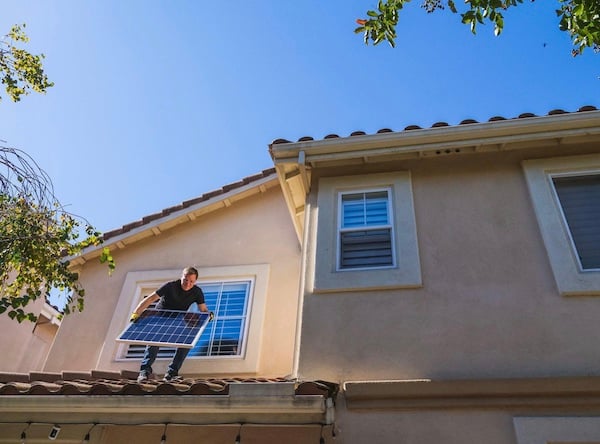Mitigating Risks: Implementing Safety Measures in Solar Panel Maintenance

Photo by Jamshaid Anwar https://www.pexels.com/@jamshaid-anwar-345256184/ from Unsplash
In a world where solar energy is increasingly becoming the power source of choice globally, ensuring the safety and effectiveness of solar panel maintenance has become paramount. This article delves into the risks associated with solar panel maintenance and the measures that can be put in place to mitigate these risks.
The Many Risks in Solar Panel Maintenance
Solar panel maintenance may be associated with several hazards, primarily physical and operational.
Physical risks include falls from heights, electric shocks, and exposure to potentially harmful substances.
Concurrently, operational risks, such as incorrect installations and subpar maintenance procedures, can lead to inefficiencies, malfunctions, or severe damage to the panels.
Mitigating these risks requires strict adherence to safety protocols, proper training, and the use of Personal Protective Equipment (PPE). However, specific measures must be adopted to address each type of risk adequately.
Safety Measures: Protecting Personnel and Panels
Among the leading physical risks in solar panel installation, falls are a common hazard due to the often-elevated positions of solar panels. Specialized safety companies like Edgefall Protection: Edge Safety & Protection Systems Company provide innovative solutions such as harnesses, safety ropes, and appropriate scaffolding.
Electric shock is another significant risk in solar maintenance, given the nature of solar panels as electricity-producing devices. Thus, safety measures include the correct handling of electrical components, using insulated tools, and maintaining safe distances from live wires.
Solar panel components may also contain potentially harmful substances, which require appropriate PPE, such as gloves and safety glasses, for safe handling.
As for operational risks, regular inspections are critical. Technicians should also strictly adhere to manufacturer guidelines and address any identified issues promptly to prevent further damage or decreased panel efficiency.
Technology: The Future of Solar Panel Safety
As technology advances, it presents opportunities to reduce risks associated with solar panel maintenance. Drones are increasingly used for remote inspections, offering a safer alternative to manual inspection. These devices can provide high-resolution images and data, allowing technicians to spot and assess any potential issues from the ground.
Robotics, too, have started to carve their place in solar panel building and maintenance. Able to perform high-risk tasks in hazardous locations, robots reduce the exposure of human personnel to risks. Additionally, advancements in machine learning and artificial intelligence have enabled these robots to perform complex tasks with increasing precision and efficiency.
Industry Standards and Regulations: The Backbone of Safety Protocols
Compliance with industry standards and regulations plays a critical role in risk mitigation during solar panel maintenance. Numerous international and national organizations have set forth comprehensive guidelines and standards to fortify safety protocols in this domain.
One of the key international standards is the IEC 62446, established by the International Electrotechnical Commission (IEC). This standard delineates fundamental safety requirements for the design, installation, and maintenance of solar PV systems. Similarly, the National Electrical Code (NEC) in the United States stipulates safety regulations that govern the electrical wiring and installation of solar panels.
On a broader scale, Occupational Safety and Health Administration (OSHA) regulations in the U.S. outline safety requirements for workers engaged in the maintenance of solar panels, particularly those working at heights or with potentially harmful substances. For instance, OSHA’s Fall Protection standards (29 CFR 1926.501) mandate the use of fall protection equipment for work that involves heights of six feet or more in the construction industry, directly influencing safety procedures in solar panel maintenance.
Wrapping Up

Photo by Kindel Media https://www.pexels.com/@kindelmedia/ from Pexels
The safety of personnel and the integrity of solar panels during maintenance are non-negotiable. From harnesses to drones, technology and safety measures must intertwine to ensure the longevity and efficiency of solar panels while keeping maintenance personnel safe. The integration of rigorous safety protocols, backed by technological advancements and adherence to industry standards, can indeed herald a new dawn in the world of solar panel maintenance.
Also read
- How to Reduce Downtime in Solar Operations?
- Hyperparameter Tuning Good Practices for Robust Predictive Models
- 5 Critical Metal Forming Processes in Solar Panel Manufacturing
- Maximizing Efficiency with Low-Maintenance Solar Panel Systems
- Cyber Hygiene for Solar Companies: Protecting Your Data from Email Threats


